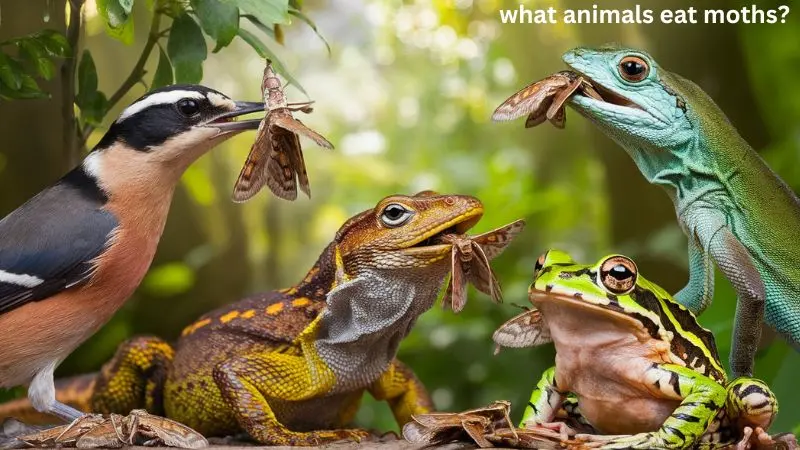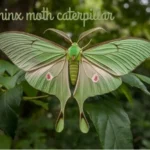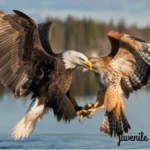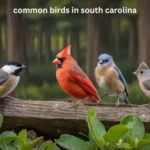Wildlife Areas
What Animals Eat Moths?
Moths, often seen fluttering near lights at night, play a crucial role in the ecosystems they inhabit. While these nocturnal insects are mostly known for their delicate wings and attraction to light, they are also a vital food source for various animals. Moths, along with their larvae (caterpillars), provide essential nutrients for a wide range of species, from birds to bats and even some amphibians. This article, brought to you by Bird01.com, explores the animals that rely on moths as a primary or occasional food source, delving into the fascinating interplay of predator and prey in the natural world.
What Animals Eat Moths?
Birds: The Daytime and Nighttime Hunters
Birds are among the most prominent predators of moths, especially during the moth’s larval stage. Many bird species actively seek out caterpillars and moths, both by day and night.
- Songbirds and Small BirdsSongbirds like warblers, chickadees, and sparrows are highly efficient at locating moth larvae on plants and trees. During the breeding season, birds need a high-protein diet to feed their young, and moth caterpillars provide an abundant source of nourishment. These birds are quick to snatch up caterpillars, especially during the spring and summer when moth populations are at their peak.Some birds, like the European cuckoo, are known for their unique behavior of feeding on toxic caterpillars, such as those of the cinnabar moth. Cuckoos have evolved to tolerate the toxins, making them specialized moth predators.
- Nocturnal BirdsOwls and nightjars are known to prey on moths after the sun sets. Owls, with their excellent night vision and silent flight, can easily capture adult moths in mid-air. Similarly, nightjars, which include species like the common nighthawk, have large mouths and swift flight patterns that help them capture flying moths at dusk and nighttime.
Bats: Masters of the Night
When it comes to night-time moth predators, bats reign supreme. These nocturnal mammals rely heavily on moths as part of their diet.
- Insectivorous BatsInsect-eating bats, particularly in temperate and tropical regions, actively hunt moths using echolocation. This biological sonar allows bats to detect the fluttering wings of moths in complete darkness. Some moth species have evolved hearing mechanisms to detect bat echolocation and attempt evasive maneuvers, but bats are still incredibly efficient at catching them.Bats like the little brown bat (Myotis lucifugus) and the Mexican free-tailed bat are voracious moth eaters, consuming thousands of insects, including moths, each night. Their predation on moths helps regulate insect populations, including those species that might otherwise become agricultural pests.
- Moth-Bat Arms RaceInterestingly, moths and bats have engaged in an evolutionary “arms race.” Some moth species have developed the ability to produce ultrasonic clicks, which confuse bats’ echolocation systems, giving them a better chance of avoiding capture. However, bats have evolved different hunting strategies, such as changing the frequency of their calls, to counteract these defenses.
Mammals: Small and Opportunistic Hunters
While bats are the most prominent mammalian predators of moths, several terrestrial mammals also consume moths, particularly their caterpillar stage.
- RodentsSmall mammals like mice, voles, and shrews feed on moth caterpillars when other food sources are scarce. These opportunistic feeders may find caterpillars hiding in leaf litter or under bark. For example, the deer mouse is known to scavenge caterpillars from plants and trees, especially during the fall when other food supplies dwindle.
- Raccoons and SkunksLarger mammals, such as raccoons and skunks, are known to eat moths and their larvae when they find them. Skunks, which are natural foragers, often dig up soil in search of moth pupae or caterpillars burrowing underground. Moths become a more significant part of their diet during the warmer months when larvae are abundant in gardens, forests, and grasslands.

Reptiles and Amphibians: Cold-Blooded Moth Eaters
Several species of reptiles and amphibians also prey on moths, particularly in regions where both predator and prey share the same habitat.
- LizardsMany lizards, especially geckos, have been observed hunting moths near light sources. As moths are attracted to light, they become easy targets for lizards waiting to pounce. Geckos, in particular, are adept at catching moths mid-flight or while they rest on walls or plants. In tropical regions, species like the Mediterranean house gecko are common moth predators, frequently found near outdoor lights.
- Frogs and ToadsFrogs and toads are ambush predators, and when moths venture too close to the ground, they become vulnerable. Amphibians like the American toad and the green tree frog are known to snap up moths with their sticky tongues, especially in the evenings when moth activity increases. Insects, including moths, form a large portion of these amphibians’ diets.
Invertebrates: Spiders, Wasps, and Other Insect Predators
Moths not only face predation from vertebrates but also from other invertebrates.
- SpidersOrb-weaving spiders and other web-building species often trap moths in their webs. Moths, attracted to lights or plants where spiders have spun their webs, are frequently caught as they fly through the air. The spider quickly wraps the moth in silk before injecting venom to paralyze and consume it.Additionally, some species of spiders actively hunt moths without the use of webs. For example, jumping spiders are known for their keen eyesight and agility, allowing them to pounce on unsuspecting moths.
- Parasitic Wasps and FliesCertain species of wasps and flies are parasitic and lay their eggs on or inside moth larvae. Once the eggs hatch, the larvae of these parasitic insects consume the moth caterpillar from within, ultimately killing it. This form of predation is particularly devastating for moth populations as it not only kills the individual caterpillar but also prevents it from reaching adulthood and reproducing.Examples include tachinid flies and braconid wasps, which target a wide variety of moth species. These parasitic predators play a significant role in controlling moth populations naturally.
Fish: Aquatic Predators of Moths
Although it may seem unlikely, some species of fish consume moths, particularly those moths that fly close to the water’s surface or fall into rivers, lakes, and ponds.
- Surface-Feeding FishFish like trout and bass are known to feed on moths that accidentally land on the water. In certain regions, during the summer, adult moths may flutter too close to the water’s edge and become easy prey for fish. Additionally, moth caterpillars that fall from trees or are washed into streams during rainfall can also be consumed by fish.
- Aquatic Habitats and Moth LifecyclesSome moth species have larvae that develop in aquatic environments. For example, the larvae of the water-loving moth (Petrophila sp.) live in streams and rivers, where they are vulnerable to predation by fish and other aquatic creatures. These larvae are a valuable food source for fish during their developmental stage.
Insects and Other Moths: Cannibalism and Competition
Interestingly, moths themselves can become prey for other insects, including fellow moths.
- Predatory MothsWhile most moths feed on nectar or plant matter, there are a few species of predatory moths. For example, the Calyptra moth is a blood-feeding species that has been observed feeding on other insects, including smaller moths. Although this behavior is rare, it shows that moths can also be a food source for their own kind.
- Insect PredatorsIn addition to parasitic wasps and flies, other insects like beetles and ants are known to prey on moth larvae. Ground beetles, for instance, are notorious for hunting caterpillars in soil or leaf litter. Ants, being opportunistic feeders, will also scavenge moth larvae when given the opportunity.
Conclusion: Moths as a Vital Part of the Food Web
Moths, while often overlooked, play a crucial role in the food web. Their presence supports a diverse array of predators, from birds and bats to reptiles and invertebrates. The predation of moths helps maintain ecological balance, preventing overpopulation and aiding in the natural regulation of pest species.
Through their interactions with various predators, moths highlight the interconnectedness of nature. From the skies where bats and birds hunt, to the soil where rodents and beetles lurk, moths are an integral part of the ecosystem. Their role as a food source ensures the survival of countless species, demonstrating the intricate and delicate balance of life.
This article, proudly presented by Bird01.com, sheds light on the fascinating world of moth predators and underscores the importance of every creature, no matter how small, in maintaining the health and stability of our natural world.






